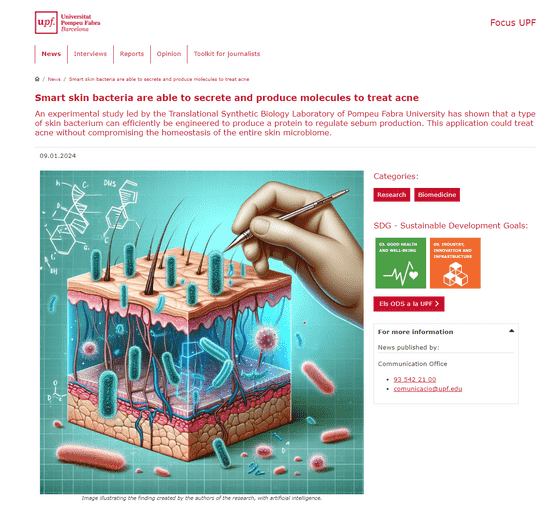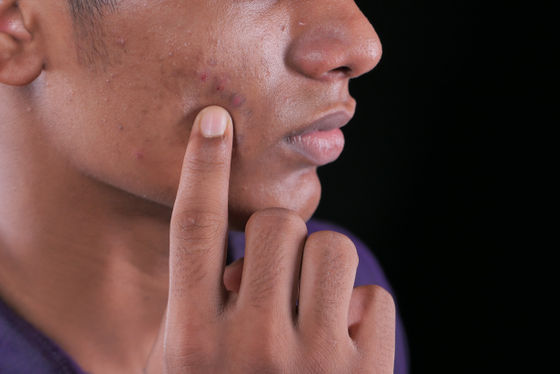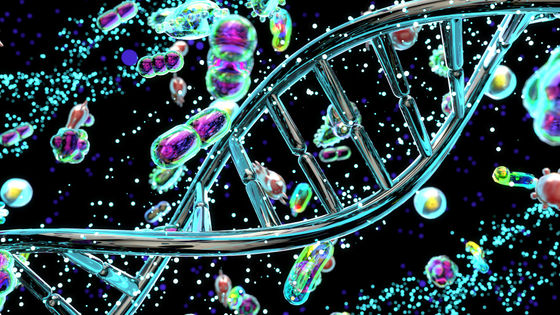A technology has been developed to recombine the genes of acne-causing bacteria and use it for 'acne treatment', and it can also be applied to atopic dermatitis

Acne is a common skin disease that occurs when the hair follicles deep within the pores of the face, chest, back, and shoulders become clogged or inflamed, and is a problem for people of all ages, including teenagers. It becomes. A paper has been published stating that by turning
Delivery of a sebum modulator by an engineered skin microbe in mice | Nature Biotechnology
https://www.nature.com/articles/s41587-023-02072-4
Smart skin bacteria are able to secrete and produce molecules to treat acne - Focus UPF (UPF)
https://www.upf.edu/en/web/focus/noticies/-/asset_publisher/qOocsyZZDGHL/content/els-bacteris-intel%C2%B7ligents-de-la-pell-s%C3%B3n-capa% C3%A7os-de-segregar-i-produir-mol%C3%A8cules-per-tractar-l-acne/10193/maximized

Bacteria Responsible For Acne Were Genetically Modified to Treat It Instead : ScienceAlert
P. acnes is a bacteria that lives deep within hair follicles and is a common resident bacteria that is widely present on the skin of healthy people. However, when sebum, which causes acne, is secreted in excess and clogs the hair follicles, it proliferates in the pores and worsens the acne inflammation.
Severe acne is treated with antibiotics that kill the bacteria that live in the hair follicles, and a drug called isotretinoin , a type of vitamin A that induces the death of sebaceous gland cells. However, these treatments do not target acne-causing bacteria, so they may destroy the microbiome created by the skin's resident bacteria. There is also a risk of side effects such as extreme dandruff and birth defects if used during pregnancy.

Isotretinoin cures acne because a protein called ``neutrophil gelatinase-binding lipocalin'' (NGAL), which is increased by this drug, causes sebaceous gland cells to self-destruct, reducing sebum secretion. Focusing on this mechanism of action, a research team at Pompeu Fabra University in Spain began research to modify the genome of P. acnes to synthesize NGAL.
P. acnes is adapted to the niche environment deep within human hair follicles and has a close relationship with acne, making it the perfect bacteria to use in acne treatment. However, the development of genetic manipulation technology called
Regarding the difficulty, Nastassia Knödlseder, lead author of the study, said, ``Until now, P. acnes was known as a bacterium that was beyond the control of scientists. 'Synthesizing proteins from elements has been extremely difficult.'

A research team that tested various buffers for delivering DNA to P. acnes and finally succeeded in creating a strain that produces NGAL conducted an experiment in which the improved P. acnes was applied to cultured sebocytes. , the amount of sebum secreted was significantly reduced. Additionally, in experiments using mice, it was confirmed that the improved P. acnes bacteria colonized deep within the hair follicles continued to produce NGAL even 2 to 4 days after application.
Mouse fur is very different from human skin, so further clinical trials are needed before genetically modified P. acnes bacteria can actually be used to treat acne.
On the other hand, since we have succeeded in genetically modifying P. acnes, which had been considered difficult until now, we can now expect the emergence of treatments using P. acnes for skin diseases other than acne, such as atopic dermatitis.
Marc Güell, who led the research, said: ``We have developed a technology platform that allows us to edit any bacteria to treat multiple diseases. 'However, in the future it could also be applied to provide genetic circuits to create smart microorganisms for applications such as regulating skin immune function.'
Related Posts:
in Science, Posted by log1l_ks







